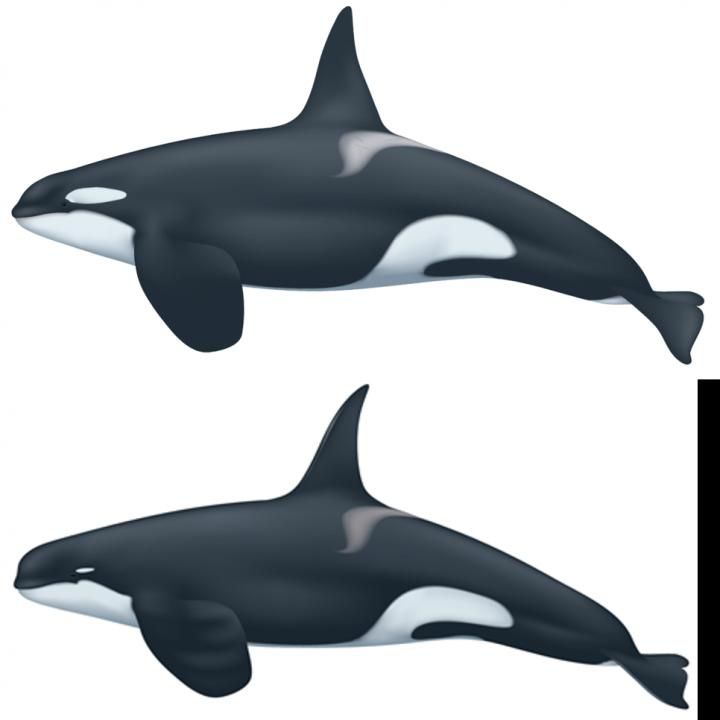A New Orca Species May Have Been Spotted Off the Coast of Chile
Until now, the so-called Type D killer whale has been the stuff of legends, eluding scientists while sneaking snacks off of fishermen’s lines
/https://tf-cmsv2-smithsonianmag-media.s3.amazonaws.com/filer/e9/b7/e9b7e409-e109-4104-a32a-50732cdae651/194880_web.jpg)
In 1955, a group of killer whales with unusually rounded heads, spiky dorsal fins and small white eyepatches washed up on the shores of a New Zealand beach. At the time, scientists attributed the pod’s abnormal appearance to a genetic mutation, but when photographs of similarly snub-nosed orcas surfaced in 2005, one researcher—the National Oceanic and Atmospheric Administration’s Robert Pitman—grew convinced the creatures represented an entirely new species.
After 14 years of searching, Pitman has finally found the evidence needed to confirm his theory. As Karen Weintraub reports for The New York Times, the marine ecologist and his team chanced upon some 25 to 30 of the so-called Type D orcas during a January expedition off the coast of Chile. Now, armed with extensive camera footage and three samples of whale skin and blubber, the researchers will work to determine if the elusive orca is, in fact, a distinct species.
Describing the encounter to NPR’s Christopher Joyce, Pitman says the expedition got off to a slow start: Bad weather kept the ship anchored at Cape Horn for the first eight days, but when a 12-hour quiet spell finally arrived, the crew launched into the ocean. The following morning, they awoke to find themselves surrounded by Type D whales.
“It was thrilling for all of us,” Pitman explains. "It's like seeing a dinosaur or something. It's one of those moments that biologists live for.”
The team filmed the orcas from both below and above water, Douglas Main writes for National Geographic. According to Weintraub, they then used harmless crossbow darts to collect skin samples for genetic testing. Later, Pitman tells Joyce, the researchers realized why the pod had ventured so close to the humans: An underwater microphone attached to the side of the boat closely resembled a fishing line—in other words, the orcas arrived in search of breakfast.
Until now, the Type D killer whale had been largely the stuff of legends. Aside from the 1955 stranding and 2005 photographs, which were captured by French scientist Paul Tixier off of the Crozet Islands in the southern Indian Ocean, most sightings were limited to fishermen who told tales of odd-looking orcas sneaking off with their catch.
Still, Pitman, Tixier and several colleagues eventually gathered enough stories and snapshots to anchor a study detailing the possible new species. Their findings, centered on six “at-sea sightings” from across the Southern Hemisphere, were published in Polar Biology in 2010.
According to Seth Borenstein of the Associated Press, the Type D orca measures around 20 to 25 feet long, making it slightly smaller than other killer whales. Although the Southern Hemisphere’s killer whales are technically classified as one species, Orcinus orca, the non-profit Whale and Dolphin Conservation group notes that the animals can be split into four different ecotypes. National Geographic’s Main points out that some of these ecotypes may constitute separate species rather than subgroups of Orcinus orca, but verification requires a formal scientific process.

Type A killer whales are the largest of the bunch and enjoy a diet of minke whales, according to Main. Type B’s are smaller seal-eaters, while Type C’s are fish fanatics. Unlike these orca cousins, the Times’ Weintraub observes, Type D whales tend to circle the slightly warmer waters of the sub-Antarctic. Fittingly, the AP’s Borenstein reports, an alternative name for the suggested ecotype is subantarctic killer whale.
Michael McGowen, a marine mammal curator at the Smithsonian Institution’s National Museum of Natural History, tells the AP that it’s too early to definitively identify the Type D orca as a new species.
Still, he says, “I think it’s pretty remarkable that there are still many things out there in the ocean like a huge killer whale that we don’t know about.”
/https://tf-cmsv2-smithsonianmag-media.s3.amazonaws.com/accounts/headshot/mellon.png)


/https://tf-cmsv2-smithsonianmag-media.s3.amazonaws.com/accounts/headshot/mellon.png)